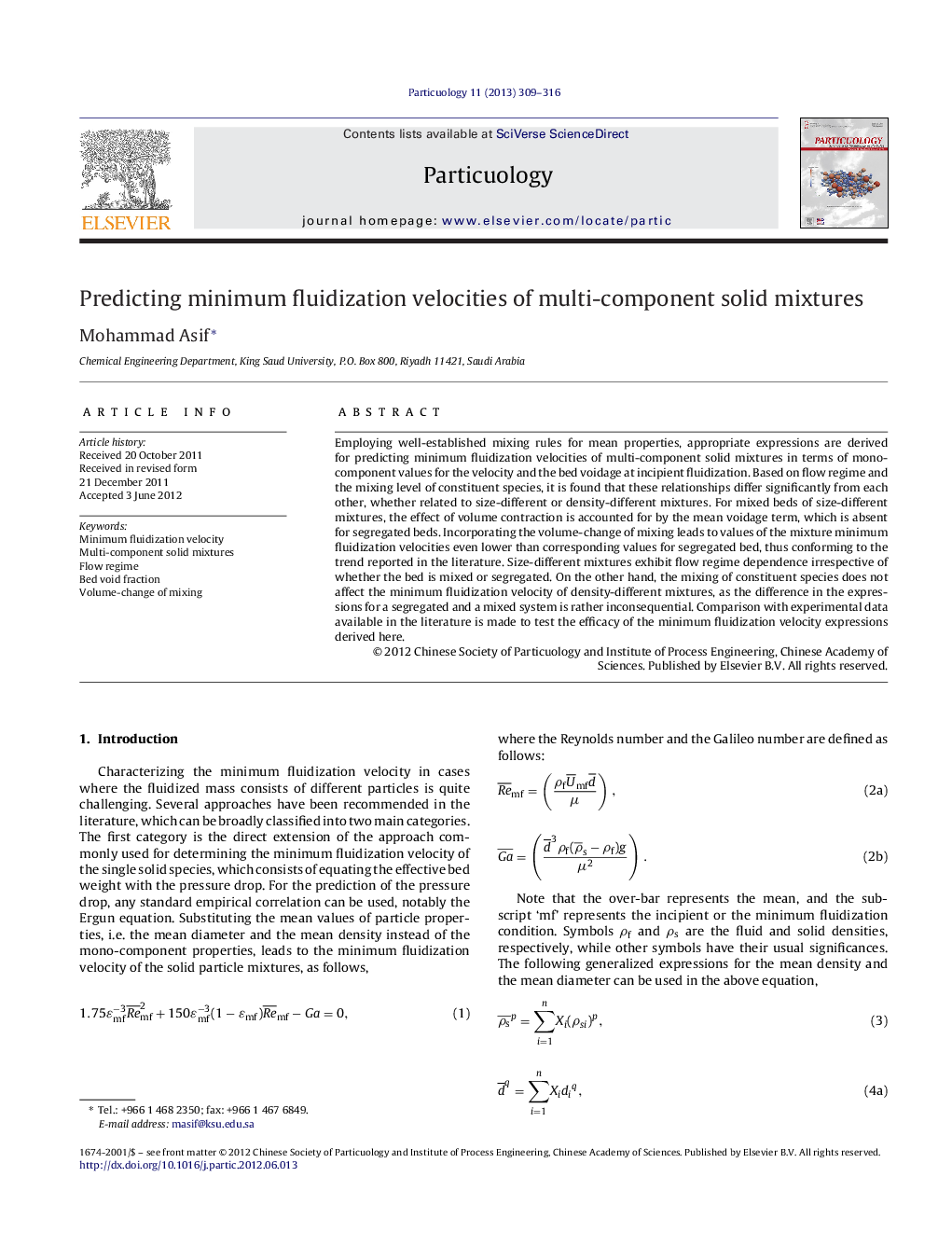| Article ID | Journal | Published Year | Pages | File Type |
|---|---|---|---|---|
| 672062 | Particuology | 2013 | 8 Pages |
Employing well-established mixing rules for mean properties, appropriate expressions are derived for predicting minimum fluidization velocities of multi-component solid mixtures in terms of mono-component values for the velocity and the bed voidage at incipient fluidization. Based on flow regime and the mixing level of constituent species, it is found that these relationships differ significantly from each other, whether related to size-different or density-different mixtures. For mixed beds of size-different mixtures, the effect of volume contraction is accounted for by the mean voidage term, which is absent for segregated beds. Incorporating the volume-change of mixing leads to values of the mixture minimum fluidization velocities even lower than corresponding values for segregated bed, thus conforming to the trend reported in the literature. Size-different mixtures exhibit flow regime dependence irrespective of whether the bed is mixed or segregated. On the other hand, the mixing of constituent species does not affect the minimum fluidization velocity of density-different mixtures, as the difference in the expressions for a segregated and a mixed system is rather inconsequential. Comparison with experimental data available in the literature is made to test the efficacy of the minimum fluidization velocity expressions derived here.
Graphical abstractFigure optionsDownload full-size imageDownload as PowerPoint slideHighlights► Simple expressions are derived for predicting mixture minimum fluidization velocity. ► Derivations are based on mean properties of constituent species of the mixture. ► Different relationships are obtained for laminar and turbulent flow regimes. ► Different relationships are obtained for mixed and segregated beds.
